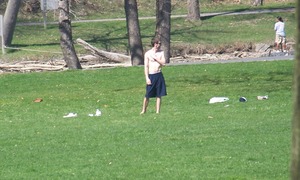While chatting to me online last night, my friend, Panda, commented to me that she barely recognized the shy, introverted, inscure boy she first befriended about a decade ago. And she’s absolutely right. I’m hardly that person I was back when she and I met and she helped me make it through some of the most emotionally trying times of my life. I’m not sure I could point to an exact time when I transformed into the self-confident, flirtatious, and occasionally intimidating guy that I am today. To be honest, I think it was a process and there’s no single “flash point” I could point to anyway. It just progressed as time went on.
In many ways, I think I was always the person I am today, even back then. I just didn’t fully realize it. But as I’ve walked that path and allowed myself to discover my inner strengths and source of confidence, I’ve become more and more myself. I’ve found a comfort with myself that, if I take the time to really think about, I never really knew before. And that’s fantastic.
Of course, as I think about it, I also think of some of those qualities I always have had — and even exhibited back before I punched through my shell and exploded into the world — and I hope that they are still equally visible. For example, I don’t want the fact that I’m now quite friendly, outgoing, flirtatious, and willing to actually say a number of things to ever negate the fact that I’m a good listener and able to give people a shoulder to cry on.
Oh, I know I’ll never lose those qualities. They’re as much a part of me as these new aspects of my personality are. They always will be. But I hope that they continue to remain visible rather than getting obscured by my ability and desire to be more outgoing and forthright.
In reality, I think that won’t be a problem in the long run. Right now, I’m exploring something new in my life and a new dimension of my being. I suppose that to some degree, it’s only appropriate that it get a little extra focus and even be a bit emphasized. But my fondest desire is to eventually find a way to integrate it all so that it feels and looks like a complete whole rather than fractionalized and somewhat conflicting pieces trying to coexist. After all, I want to be a complete whole, and all of these things are what make the whole of me.




